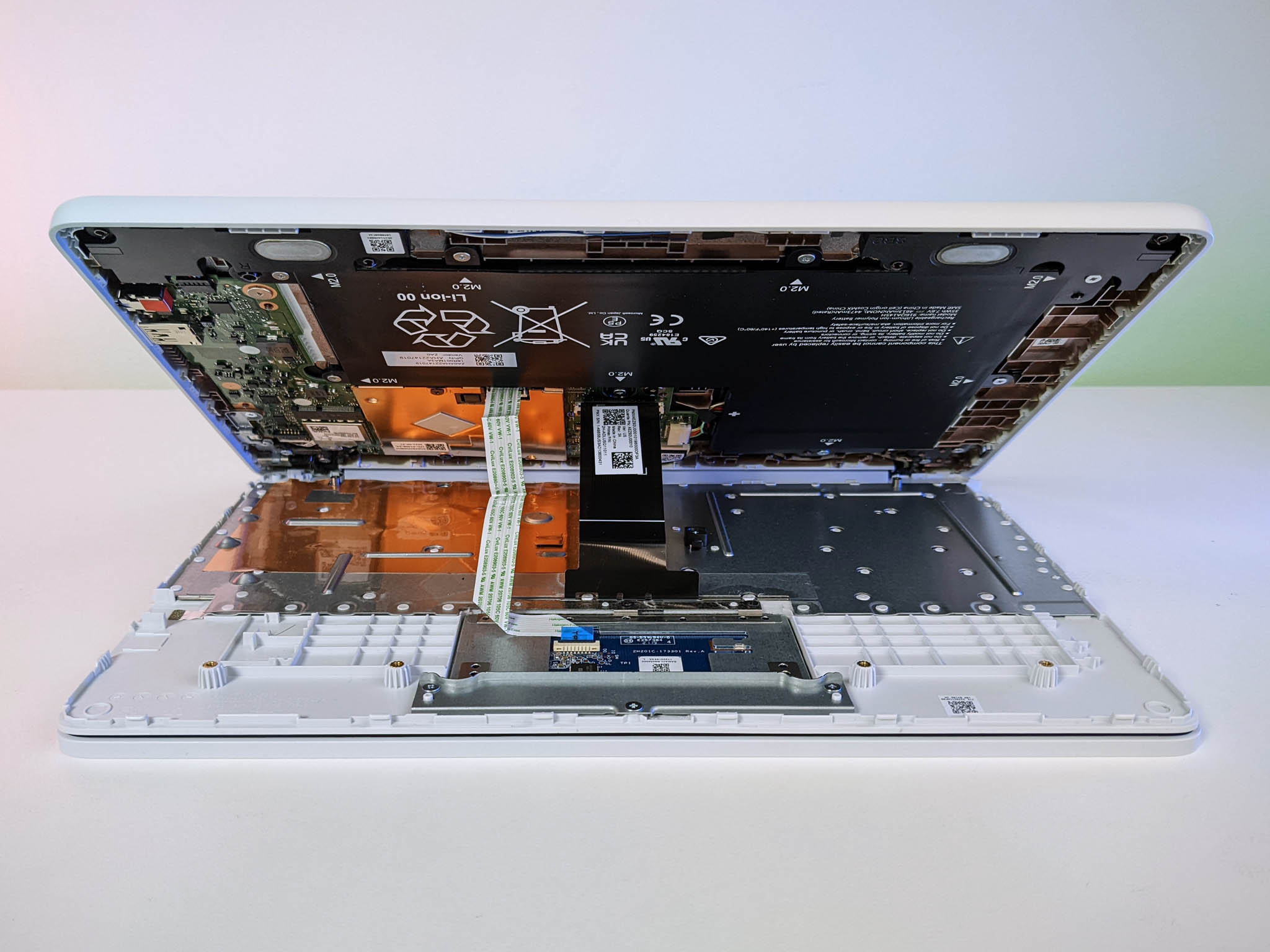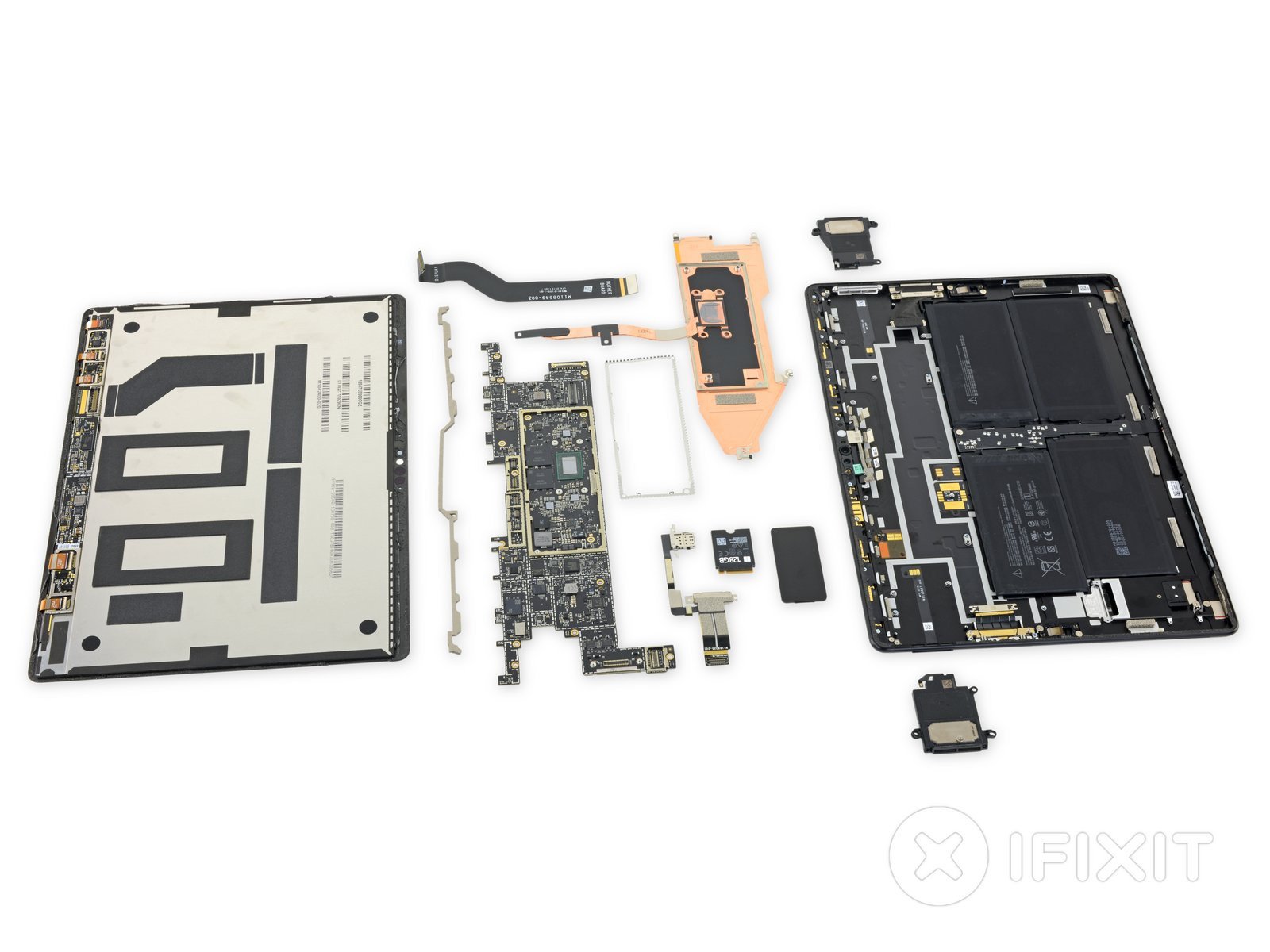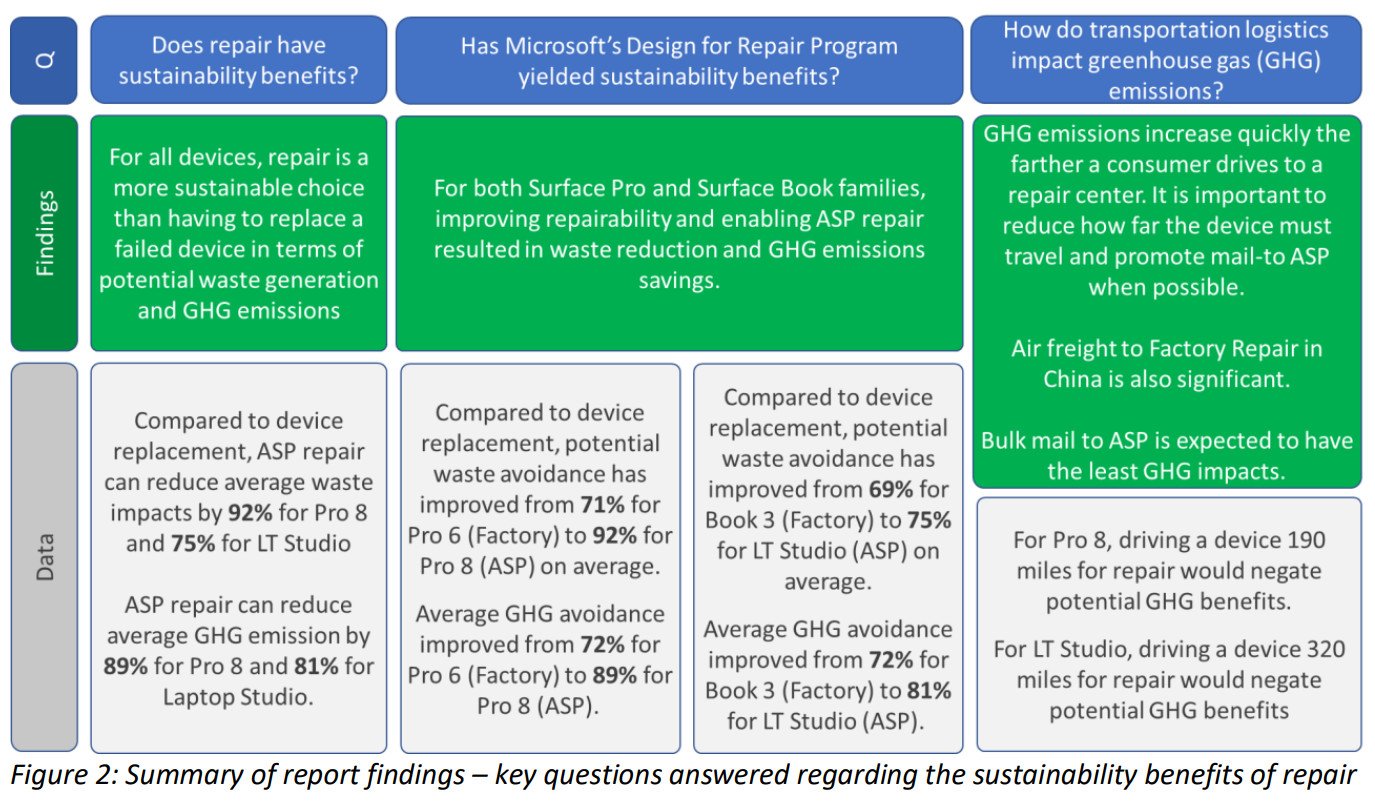Microsoft delivers promised study revealing device repair reduces waste, climate emissions
A new independent study by Oakdene Hollins on behalf of Microsoft demonstrates that right-to-repair has significant positive impacts on the environment.

Microsoft's Surface devices often win accolades for their advanced, clean, minimalist designs, but those come at the expense of repairability. Instead of relying on visible screws, Microsoft often depends on glue and a chassis that is hard to open without destroying the device. A computer like Surface Pro 7 earned a measly score of one (out of 10) for repairability from iFixit — the same score shared by previous Surface Pros.
As a consequence, in October 2021, Microsoft was called out by As You Sow, a shareholder representative, which filed a resolution demanding that the company respond to the growing right to repair movement. Microsoft had a quick turnaround on the matter, which resulted in the complaint being withdrawn. In its response, Microsoft remarked it would take these immediate actions:
- Complete a third-party study evaluating the environmental and social impacts associated with increasing consumer access to repair and determine new mechanisms to increase access to repair, including for Surface devices and Xbox consoles;
- Expand the availability of certain parts and repair documentation beyond Microsoft's Authorized Service Provider network; and
- Initiate new mechanisms to enable and facilitate local repair options for consumers.
The latter two were later addressed with a partnership with iFixit. The two companies announced official repairability tools for recent Surface devices, including Surface Pro 7+/8/Pro X, Surface Laptop 3 and 4, Surface Laptop Go, Surface Laptop SE, and Surface Laptop Studio. The tools are available to independent repair technicians and give consumers another low-cost way to do repairs on Microsoft products without much hassle.
Today, Microsoft has completed the first part of its October promise —a third-party study evaluating the environmental and social impacts of increased consumer repair access.
The study was published by Oakdene Hollins and given to Windows Central by Microsoft. The paper is 11 pages long and very detailed about the assessment and conclusions, which speak heavily in favor of the somewhat obvious environmental benefits of giving consumers the ability to repair PCs versus junking them.
The crux of the study's conclusions can be found below:
The study found that, compared to a device replacement scenario, all forms of repair offer significant greenhouse gas (GHG) emission and waste reduction benefits. It also found that enabling repair through device design, spare part offerings, and localization of repair have significant potential to reduce carbon and waste impacts. Finally, it highlighted the role that transportation logistics can play in contributing to overall GHG emissions associated with repair services. To further reduce waste and GHG emissions, Microsoft is advised to take steps to expand repair locations and capabilities across more devices and to promote mail-to repair services.
Some other key findings from the report from the press release:
All the latest news, reviews, and guides for Windows and Xbox diehards.
- For the seven devices studied, the study showed that repairing the product instead of device replacement can yield up to a 92% reduction in potential waste generation and GHG emissions;
- Greater than 20% of the net sustainability benefits of repair are determined by the transportation method and logistics for delivering devices to repair facilities; and
- "Mail-to" repair services offer the lowest GHG emissions, even over long distances, compared to other transportation methods, such as consumers driving their own vehicles to repair facilities.
The study notes that mailing devices to Authorized Service Providers (ASP) have the lowest overall GHG impact. Still, Microsoft could do even more by expanding "ASP repair locations and capabilities across more devices and promote bulk mail-to repair services when feasible." The recommendation is stated because "Currently, ASP Repair is only available to Microsoft's commercial customers, but this study supports the case for expanding ASP repair to all customers."
Expanding consumer ASPs is part of Microsoft's strategy for improved repairability.
Counterintuitively, while it may seem better for consumers to drive their devices to an authorized repair shop, the study notes that, even over short distances, "GHG emissions may increase rapidly." But having closer ASPs where "mail-to" exists "offered an order of magnitude lower GHG emissions impact even over much larger transport distances and, therefore, should be encouraged."

That's good news, although it does make one wonder what if Microsoft didn't shutter all its official stores in 2020. But unlike Apple, Microsoft never did on-site repairs for Surfaces at those shops. Instead, it would simply exchange the product for a new one while sending out the defective product for a long-distance factory repair. Later, that device would be sold as refurbished or sometimes used in a warranty exchange. The environmental impact was likely significant, with such policies causing unnecessary waste.
Today's report also follows Apple's remarkable 79-pound rentable repair kit, which can be sent to consumer homes directly, albeit wheeled in. The environmental impact of sending 79lbs of equipment instead of mailing out a 6-ounce iPhone seems hilariously contradictory if sustainability is of concern.
Microsoft's improving repairability with Surface
Starting in 2017, Microsoft began to look at ways to improve better repairability with its Surface devices, most of which were developed for years before hitting the market. One of the first devices was the Surface Laptop 3, which allowed the keyboard deck to be removed to access the internals. Since then, Surface Pro X and Surface Pro 8 have offered easy access to the SSD compartment, while the new Surface Laptop Studio is magnitudes more serviceable than Surface Book 3.
Surface Pro X even beat out Apple's iPad in 2019 for repairability by earning 6 (out of 10) from iFixit, a substantial jump from one for Surface Pro 7. The news even caught iFixit by surprise:
It would seem that Microsoft has placed at least one foot on the repairability train—between this Pro X and the Laptop 3, we can hardly believe all the repair-focused changes they've made!
In a conversation with Jason Brown, Director, NPI Design for Repair, and Jeremy L McClain, Director, Customer Success and Experience at Microsoft, I asked about the challenges Microsoft faced in balancing Surface ID (its look, feel) with the need for the right to repair. After all, going from everything glued to relying on (hidden) screws is not trivial. The answer was straightforward: Standardized tools. Microsoft can create a set of principles around design and rely on a simplified set of tools to create a consistent experience around repairability. But the devices need to be designed from the ground up with these considerations in place while not sacrificing innovation.
When it comes to repairing, Microsoft tells me that displays are usually the top "failure modes," followed by keyboards when it comes to laptops. Batteries rarely break, but, long-term, they are often at the point of failure as they degrade over time. Being able to replace those batteries, especially after the warranty has expired, is one area where Microsoft is focused on in preventing Surfaces from ending up in landfills. The same goes for displays, which can break many years later even without early Q&A failure.
For Microsoft, there's a double focus on repair and extending device longevity.
Microsoft also noted that on-site repair, especially for schools, is critical for controlling costs. This concept was crucial to something Surface Laptop SE, which can be completely torn apart with just a couple of tools.
Of course, not all devices are created equal. While Surface Laptop Studio is much easier to work on than Surface Book 3, something like Surface Duo 2 is more complicated. Microsoft notes that when it comes to design, it still needs to balance safety with design/innovation while also attempting to make it repairable. That said, Microsoft did tell me that devices going forward are all being designed with repairability in mind meaning there will be "zero regression" between generations.
Overall, Microsoft is taking ambitious steps to make Surface (and Xbox) easier to repair than ever. While more progress is needed, and only newer Surfaces will benefit, at least your Surface Pro 8 now stands a better chance of living a second life instead of being recycled somewhere. Whatever your views are on the environment, we can all agree that easier repairs are a better consumer experience.

Daniel Rubino is the Editor-in-chief of Windows Central. He is also the head reviewer, podcast co-host, and analyst. He has been covering Microsoft since 2007 when this site was called WMExperts (and later Windows Phone Central). His interests include Windows, laptops, next-gen computing, and wearable tech. He has reviewed laptops for over 10 years and is particularly fond of 2-in-1 convertibles, Arm64 processors, new form factors, and thin-and-light PCs. Before all this tech stuff, he worked on a Ph.D. in linguistics, performed polysomnographs in NYC, and was a motion-picture operator for 17 years.

